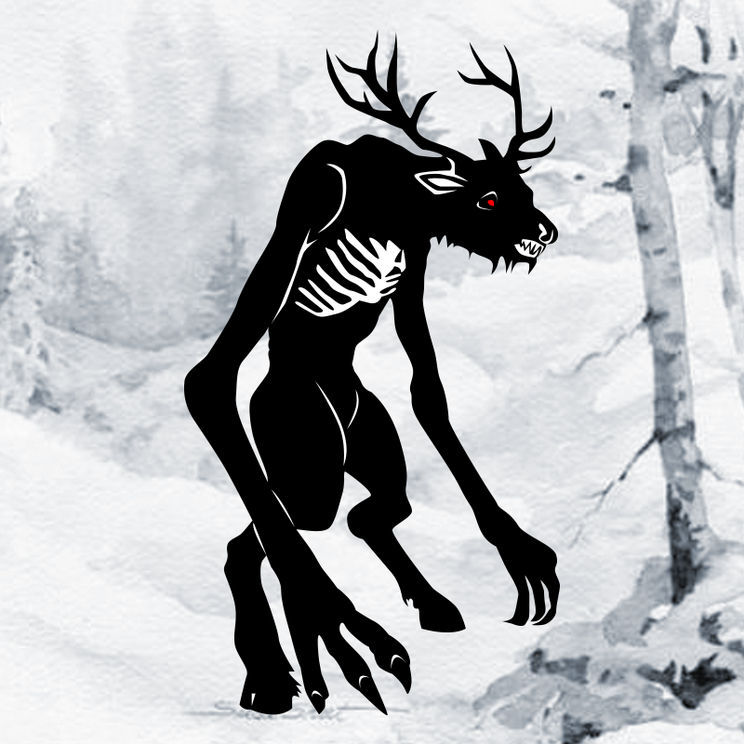Wendigo
The Wendigo is a wicked spirit that haunts the wild areas of North America's Atlantic Coast and Great Lakes regions. It's a bony, emaciated beast with desiccated gray skin and hollow, sunken eyes. This monster comes to us courtesy of the Algonquin-speaking people of the oft-frozen north; such as the Ojibwe, the Saulteaux, the Cree, the Naskapi, and the Innu.
This cannibalistic creature is said to feast on the flesh of humans, and according to some traditions, the Wendigo grows in proportion to the size of its meal--meaning it can be much larger than a man. According to some, a Wendigo is created when a human being succumbs to cannibalism; even if it's just to survive. Such an act hopelessly corrupts that human's spirit, birthing a ravenous Wendigo in its place.
Certain researchers believe that tales of the Wendigo serve as a type of morality play warning against cannibalism. Winter in the north is harsh, and survival was a precarious proposition into the early 20th century. The condition known as Wendigo psychosis was recognized by European explorers and missionaries as early as the 17th century; although the native inhabitants had surely born unfortunate witness to it since much earlier. It's characterized by a fierce hunger for human flesh, brought on by winter famine, and the condition certainly informed the stories of the Wendigo.
Others believe that there may be more to the story than simple starvation-induced bouts of madness. The appearance of the creature has led some researchers to wonder if perhaps some of the stories are based on something of a more physical substance. Some Bigfoot researchers speculate that the Wendigo's large size and appearance might be based on sightings of North America's best known cryptid; while still others think that perhaps the stories could be indicative of an actual spiritual entity.
Modern accounts of encounters with the Wendigo have appeared on the Internet in recent years, although it can be difficult to judge the veracity of the tales in this era of creepypasta. Indigenous peoples and early settlers certainly believed in the legend, and sightings were sometimes recorded. The sightings were often said to be precursors to death and disaster, with one famous example coming out of Roseau, Minnesota, in which a series of deaths were said to be predicted by Wendigo sightings dating from the late nineteenth into the early twentieth centuries.
Regardless of one's beliefs regarding these stories, perhaps it is best to bundle up against the cold and be thankful that winter famine in North America no longer leads to the types of behavior that one might attribute to the Wendigo.

